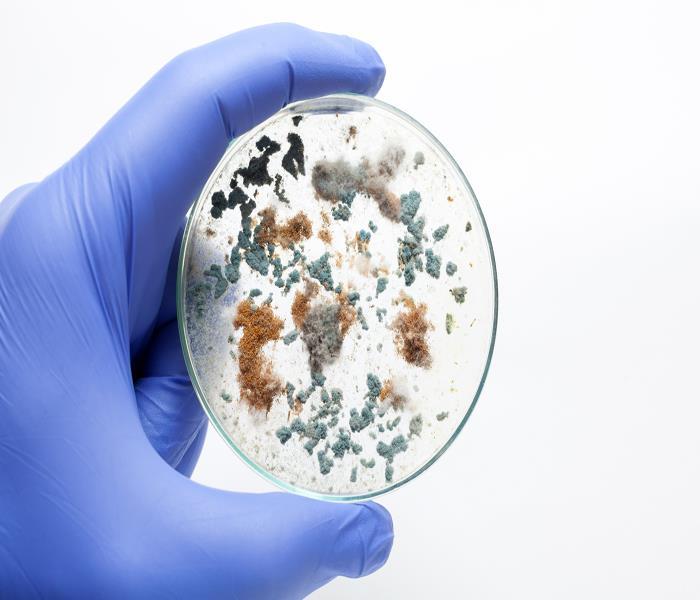Winter Mold Growth: What You Need To Know
2/16/2016 (Permalink)
The wet season in the winter months is one of the best times of year for molds to grow and expand. Often mold is contained near sources of water where it can easily grow and reproduce. As it grows, mold can breakdown and compromise the integrity and strength of the source in which it lives.
Mold spores are microscopic and are naturally found in the air we breathe indoors and outdoors. When large amounts of spores grow, one’s health may be compromised. Mold can be killed, but if it is not removed properly, it can remain in the area just cleaned and the dry spores can be released into the air. Mold remediation services can help eliminate the mold in your home and personal items affected by water damage.
Prevention, however, is what will help keep your lungs healthy and homes and buildings strong. We’ve put together a few tips on how you can help thwart mold from infesting your home that are efficient and realistic:
General Home and Building Maintenance:
- Keep all areas clean.
- Make sure there is good air circulation. Use an exhaust fan or open a window when showering, cooking, and washing the dishes.
- Prevent mold and water damage by turning off the water flow to broken appliances and pipes.
- Replace cracked or defective mortar in basements. If you find your basement is wet or has water leaking into it, inspect the outside drainage systems.
- Spread moisture-barrier materials in crawl spaces over the soil. Heavy roofing paper or plastic film made of polyethylene can be used for this. Make sure there is good ventilation in the crawl space and, if possible, do not enclose it. One may need to use a fan to blow out humid air from under the building.
- One can get rid of humidity or dampness within a building by heating it for a short time. After heating, open up the doors and windows, or use an exhaust fan, to let out the air that is moist.
- Hire a professional roofing contractor to cover a damaged roof with a tarp or tent. This will help protect the building from the elements.
- If there are freezing temperatures, take measures to insulate pipes inside and out to ensure they will not crack and/or burst.
- Make sure all the seals on the windows and doors are not compromised and in good-working condition.
- Clean and repair roof gutters regularly.
- Make sure the ground around your building slopes away from the foundation so water does not collect around or enter in to it.
- Act quickly if you see condensation on windows, pipes, or walls inside a building. Dry out the area and determine if the source of the condensation is from a leak or the result of high humidity.
After a Flood or Heavy Rains:
- Work fast. Call in SERVPRO, which will help in the cleaning and disinfecting of your home from toxins and spores mold can release.
- Lower the humidity and temperature in the building: molds do not like these conditions. Open up windows if the air outside is less humid than the air inside. Otherwise, turn on an air conditioner and a dehumidifier.
- Dispose of moldy items in a sealed bag. Objects that can be saved should be frozen (which deactivates mold) or dried out. Mold remediation services can assist with restoring many of your items, including documents, pictures, and books.
- Make sure there is good ventilation within the building affected. Use a fan, if necessary, to promote good air circulation.
- Remove as much standing water in a building as quickly and safely as possible after disconnecting all electronic equipment inside the building.
- The two key things to remember in mold prevention are: 1. Keep everything clean, and 2. Keep everything dry. Many simple steps can be taken to prevent mold damage as well as water damage during the winter months. However, keep the number SERVPRO handy should you require their services. These professionals can efficiently and quickly ensure your home is safe, dry, and mold-free.





 24/7 Emergency Service
24/7 Emergency Service
